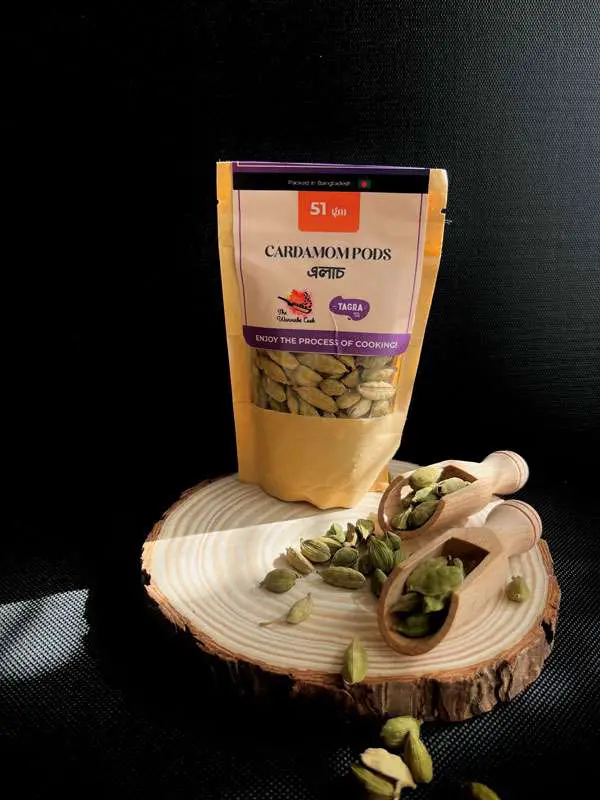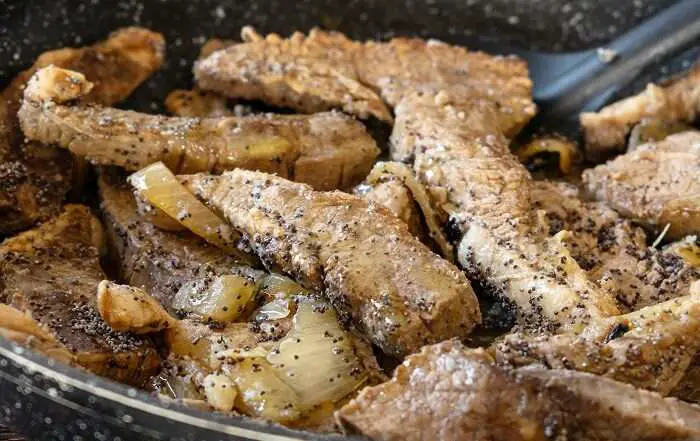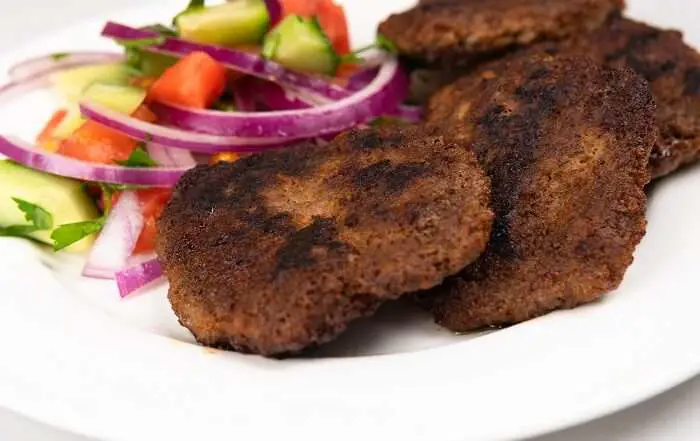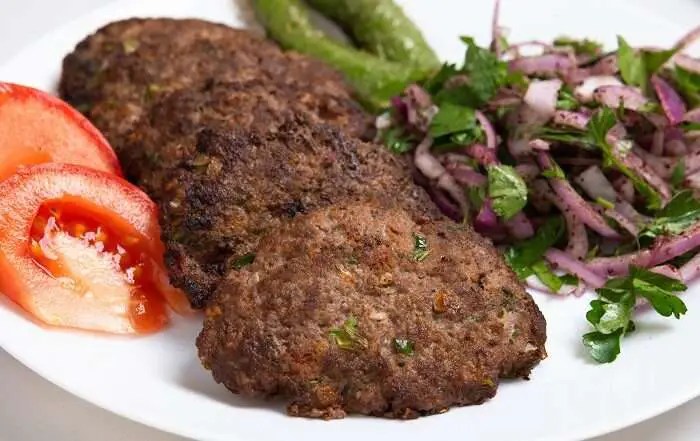Cardamom is believed to have originated in the forests of the Western Ghats in southern India. It grows wild in the tropical and subtropical regions of India, Sri Lanka, Bhutan, Nepal, and Bangladesh. Cardamom has been cultivated in these regions for centuries and has played a significant role in Indian cuisine, Ayurvedic medicine, and trade throughout history.
The origin of cardamom can be summarized with these key points:
Geographical Origin: Cardamom is native to the tropical rainforests of the Western Ghats in southern India. This region, known for its biodiversity, provided an ideal habitat for the wild growth of cardamom plants.
Historical Cultivation: Indigenous communities in India, Sri Lanka, and neighboring regions began cultivating cardamom thousands of years ago. Its use in cooking, medicine, and religious rituals contributed to its early cultivation and trade.
Culinary and Medicinal Use: Cardamom has been prized for its aromatic seeds, which are used in both sweet and savory dishes across South Asia, the Middle East, and Scandinavia. It is also valued for its medicinal properties in traditional systems like Ayurveda.
Global Trade: Cardamom became a valuable commodity in ancient trade routes, particularly through the spice trade networks linking India with the Middle East, Europe, and beyond. This trade continues to influence its cultivation and global market today.
Modern Production: Today, cardamom is primarily cultivated in India, Guatemala, and to a lesser extent, Sri Lanka, Tanzania, and other tropical regions. India remains a significant producer and exporter, particularly of green cardamom.
Health Benefits
Cardamom offers several potential health benefits, primarily due to its rich content of essential oils, antioxidants, and other beneficial compounds. Here are some of the key health benefits associated with cardamom:
Digestive Health: Cardamom is known to promote digestive health by stimulating the secretion of enzymes that aid in digestion. It can alleviate symptoms like indigestion, bloating, gas, and constipation.
Anti-inflammatory Properties: The antioxidants and anti-inflammatory compounds in cardamom may help reduce inflammation in the body, which is linked to various chronic diseases.
Improves Oral Health: Chewing cardamom seeds can help freshen breath and improve oral hygiene. It also has antibacterial properties that may help combat oral pathogens.
Heart Health: Some studies suggest that cardamom may help lower blood pressure and cholesterol levels, contributing to heart health. Its antioxidant properties may also protect against heart disease.
Antimicrobial Effects: Cardamom contains compounds that exhibit antimicrobial properties, which may help fight bacteria and fungi, thereby supporting overall immune function.
Anti-cancer Potential: Preliminary research indicates that cardamom may have potential anti-cancer properties, though more studies are needed to confirm its efficacy in this regard.
Diabetes Management: Some studies suggest that cardamom may help improve blood sugar control and insulin sensitivity, which could be beneficial for individuals with diabetes.
Respiratory Health: In traditional medicine, cardamom has been used to treat respiratory conditions like coughs and bronchitis. Its expectorant properties may help loosen phlegm and relieve symptoms.
Weight Management: Cardamom may aid in weight loss by boosting metabolism and reducing cravings, though more research is needed to fully understand its effects in this area.
Fun Facts
Queen of Spices: Cardamom is often referred to as the “Queen of Spices” due to its pleasant aroma and versatile culinary uses.
Historical Use: Cardamom has a long history of use dating back thousands of years. It was traded along ancient spice routes and was highly valued by ancient civilizations such as the Egyptians, Greeks, and Romans.
Varieties: Two main types of cardamom are widely used: green cardamom (Elettaria cardamomum) and black cardamom (Amomum subulatum). Green cardamom is more common and prized for its delicate flavor, while black cardamom has a smoky flavor and is used in savory dishes.
Costly Spice: Cardamom is one of the most expensive spices by weight, after saffron and vanilla. Its high price reflects its labor-intensive cultivation and harvesting process.
Culinary Versatility: Cardamom is used in both sweet and savory dishes around the world. It adds a unique aroma and flavor to desserts, beverages (like chai tea), curries, rice dishes, and even meat marinades.
Chewing Gum: In some cultures, cardamom seeds are chewed as a natural breath freshener and digestive aid, similar to how people use mint or fennel seeds.
Traditional Medicine: Ayurveda, the ancient Indian system of medicine, has long recognized cardamom for its medicinal properties. It is used to treat digestive issues and respiratory ailments and as a general tonic.
Fragrance and Perfumery: Cardamom’s aromatic seeds are used in perfumery and aromatherapy for their pleasing scent and therapeutic benefits.
Festival and Rituals: In some cultures, cardamom is used in religious ceremonies, rituals, and festive foods, symbolizing hospitality, warmth, and prosperity.
Global Production: While India remains the largest producer and exporter of cardamom, Guatemala is the largest exporter of cardamom globally, primarily green cardamom.
Use of Cardamom in Cooking
Cardamom is a versatile spice that is used in cooking across various cuisines worldwide.
Overall, cardamom’s aromatic and slightly citrusy flavor makes it a versatile spice that adds depth and complexity to both sweet and savory dishes across different culinary traditions.
Here are some common uses of cardamom in culinary applications:
Level 1: Natural Remedies for Immune Support Using Cardamom
Cardamom Ginger Tea
In a small saucepan, bring the water to a boil. Add the sliced ginger and crushed cardamom pods to the boiling water. Reduce heat and let it simmer for 5-7 minutes to allow the flavors to infuse. Remove from heat and strain the tea into a mug. Stir in honey and lemon juice to taste, if desired. Sip the tea while warm. You can drink this tea 1-2 times a day for immune support.
This tea combines the immune-boosting properties of ginger and cardamom. Ginger helps with digestion and has anti-inflammatory properties, while cardamom adds a delightful aroma and potential antimicrobial benefits. Lemon juice adds vitamin C, known for its immune-supporting properties.
Cardamom Turmeric Milk (Golden Milk)
In a small saucepan, warm the milk over medium heat. Add ground turmeric, cardamom, cinnamon, and black pepper to the milk. Whisk the mixture continuously until it is well combined and heated through (but not boiling), about 3-5 minutes. Remove from heat and stir in honey or maple syrup if desired. Pour the golden milk into a mug and enjoy warm.
This golden milk recipe combines the anti-inflammatory properties of turmeric with the antioxidant and potential immune-supportive properties of cardamom and cinnamon. It’s soothing and comforting, perfect for supporting overall immune health, especially during colder seasons.
Level 2: Using Cardamom in Dinner Dishes
Cardamom Spiced Roast Chicken with Sweet Potatoes
Preheat Oven: Preheat your oven to 400°F (200°C). Prepare Chicken and Vegetables: Pat dry the chicken thighs with paper towels and season generously with salt and pepper. In a small bowl, mix together the ground cardamom, cinnamon, cumin, and ginger. Place the sweet potatoes and onion slices in a large baking dish. Drizzle with olive oil and sprinkle half of the spice mixture over the vegetables. Toss to coat evenly. Season Chicken: Rub the remaining spice mixture all over the seasoned chicken thighs. Assemble Dish: Arrange the seasoned chicken thighs on top of the vegetables in the baking dish. Scatter minced garlic over everything. Bake: Pour chicken broth or water into the baking dish around the chicken and vegetables. Cover the baking dish with foil and bake in the preheated oven for 30 minutes. Remove the foil and continue baking for another 20-25 minutes, or until the chicken is cooked through and the sweet potatoes are tender.
Cardamom-Spiced Meatloaf
Preheat Oven: Preheat your oven to 350°F (175°C). In a large bowl, combine ground beef, breadcrumbs, chopped onion, minced garlic, beaten egg, milk, ground cardamom, cinnamon, nutmeg, salt, and black pepper. Mix well until everything is evenly combined. Form the meat mixture into a loaf shape and place it in a baking dish or on a baking sheet lined with parchment paper. In a small bowl, mix together ketchup, brown sugar, Worcestershire sauce, and Dijon mustard. Spread this mixture evenly over the top of the meatloaf. Bake in the preheated oven for 1 hour, or until the internal temperature of the meatloaf reaches 160°F (70°C). Remove from the oven and let the meatloaf rest for 10 minutes before slicing. Serve slices of meatloaf with your favorite sides like mashed potatoes and steamed vegetables.
Cardamom-Spiced Sweet Potato Soup
Heat olive oil in a large pot over medium heat. Add chopped onion and sauté until translucent, about 5 minutes. Add minced garlic and cook for another minute until fragrant. Add diced sweet potatoes to the pot and stir to combine with the onions and garlic. Sprinkle ground cardamom, cumin, coriander, cinnamon, salt, and pepper over the sweet potatoes. Stir to coat evenly.
Pour in vegetable or chicken broth, enough to cover the sweet potatoes. Bring to a boil, then reduce heat to low and simmer until sweet potatoes are tender, about 15-20 minutes. Use an immersion blender or transfer the soup to a blender (in batches if necessary) to puree until smooth. Stir in coconut milk for added creaminess, if using. Adjust seasoning to taste. Ladle the soup into bowls and garnish with chopped cilantro or parsley.





